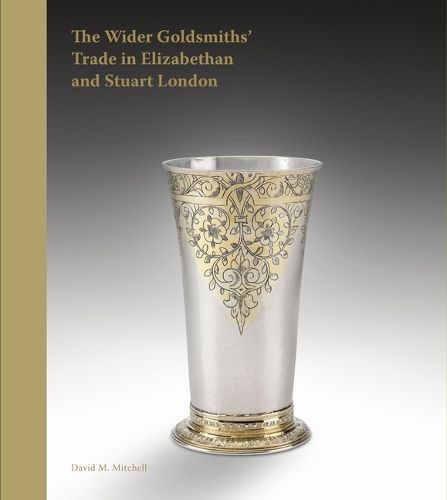Readings Newsletter
Become a Readings Member to make your shopping experience even easier.
Sign in or sign up for free!
You’re not far away from qualifying for FREE standard shipping within Australia
You’ve qualified for FREE standard shipping within Australia
The cart is loading…






This book fills a gap in seventeenth-century studies of the Goldsmiths' Company.The Wider Goldsmiths' Trade in Elizabethan and Stuart London is the first book to study all aspects of the goldsmiths' trade. It challenges the assumption that the manufacture of silver plate and gold jewelry was only overseen by the Goldsmiths' Company during the seventeenth century. It also considers allied trades such as refining, wiredrawing, and the making of small swords and watches, as well as the development of the modern banking system. On Elizabeth I's accession, England's main exports were wool, unfinished woolen cloth, and some minerals, and its imports consisted of a great range of goods including luxuries such as silks, fine linens, and even scissors. By the end of the seventeenth century, the situation was transformed due to a burgeoning maritime trade with many parts of the world with imports of raw materials. This book considers the wider goldsmiths' trade against these dynamic changes: the organization and control of the goldsmith branches, and the design, manufacture, and sale of its wares. The chapters cover a range of topics-from history and context to the various branches of the trade to the development of the modern banking system.
$9.00 standard shipping within Australia
FREE standard shipping within Australia for orders over $100.00
Express & International shipping calculated at checkout
This book fills a gap in seventeenth-century studies of the Goldsmiths' Company.The Wider Goldsmiths' Trade in Elizabethan and Stuart London is the first book to study all aspects of the goldsmiths' trade. It challenges the assumption that the manufacture of silver plate and gold jewelry was only overseen by the Goldsmiths' Company during the seventeenth century. It also considers allied trades such as refining, wiredrawing, and the making of small swords and watches, as well as the development of the modern banking system. On Elizabeth I's accession, England's main exports were wool, unfinished woolen cloth, and some minerals, and its imports consisted of a great range of goods including luxuries such as silks, fine linens, and even scissors. By the end of the seventeenth century, the situation was transformed due to a burgeoning maritime trade with many parts of the world with imports of raw materials. This book considers the wider goldsmiths' trade against these dynamic changes: the organization and control of the goldsmith branches, and the design, manufacture, and sale of its wares. The chapters cover a range of topics-from history and context to the various branches of the trade to the development of the modern banking system.